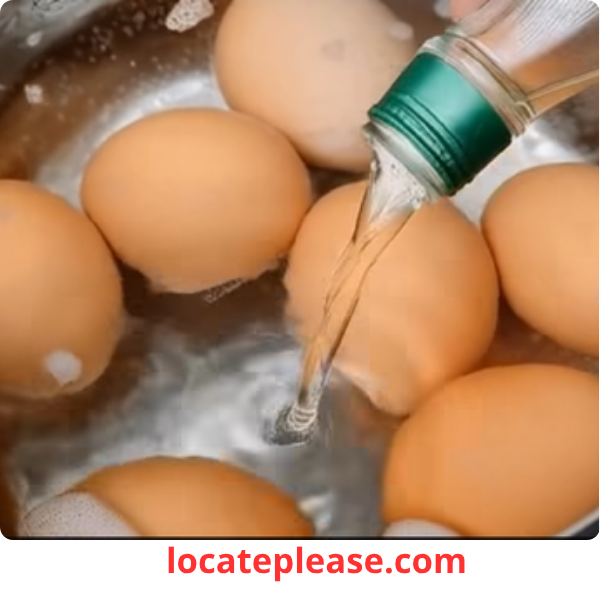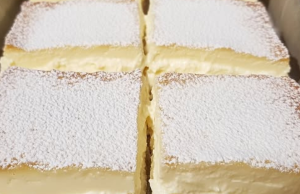If you’ve ever boiled eggs, you know the frustration:
A crack in the shell leads to white wisps spilling into the water, leaving you with a messy, ragged egg and a pot full of floating goo.
But there’s a simple kitchen trick that can prevent this — and it’s been hiding in plain sight for generations:
👉 Add vinegar to the cooking water.
This small step makes a surprising difference — whether you’re boiling, poaching, or simmering eggs. Let’s break down why it works, how to do it right, and when to use it.
Why Add Vinegar When Cooking Eggs?
The magic lies in chemistry.
Egg whites are mostly albumin proteins and water. When the shell cracks during cooking, the liquid white leaks out into the boiling water. Without intervention, it disperses, creating stringy, unappetizing strands.
But when white vinegar (acetic acid) is added to the water, it lowers the pH, creating a more acidic environment. This causes the egg whites to coagulate faster — meaning they cook and set almost instantly when they hit the water.
The result?
✅ Cleaner, neater eggs
✅ Less mess in the pot
✅ Firmer whites with minimal spreading — especially important for poached eggs
When to Use Vinegar: Best Cooking Methods
1. Poached Eggs – The #1 Use Case
Poaching involves cracking an egg directly into simmering water — a process where shape and structure are everything.
How vinegar helps:
- Keeps the egg white tightly wrapped around the yolk
- Prevents feathering and stringiness
- Gives you that restaurant-quality, compact poached egg
How to do it:
- Bring water to a gentle simmer
- Add 1 tablespoon of white vinegar per 4 cups of water
- Stir the water to create a vortex, then crack in the egg
- Cook 3–4 minutes until whites are set
🍳 Pro tip: Use the freshest eggs possible — their tighter whites hold shape better.
2. Soft-Boiled or Hard-Boiled Eggs
While less critical than poaching, adding vinegar can still help:
- Minimize white leakage if the shell cracks
- Make peeling easier by slightly breaking down the shell membrane
How to do it:
- Add 1 tablespoon of vinegar to the pot before boiling
- Proceed as usual — bring to a boil, then simmer
🥚 Bonus: Add a pinch of salt to help prevent cracking and ease peeling.
How Much Vinegar Should You Use?
You don’t need much:
- 1 tablespoon of white vinegar per quart (4 cups) of water is perfect.
- Too much vinegar can give eggs a slight tangy taste or affect texture — so don’t overdo it.
Apple cider vinegar works too, but may tint the whites slightly. Stick with clear white vinegar for best results.
Common Myths About Vinegar and Eggs
❌ Myth: Vinegar makes eggs easier to peel — not exactly.
While vinegar can soften the shell slightly, it can also increase the risk of over-softening or pitting, especially with prolonged cooking. For easy peeling, start with older eggs and cool them in ice water after cooking.
❌ Myth: Vinegar changes the flavor — not noticeably.
The amount used is minimal, and most of it stays in the water. Your eggs won’t taste like pickles — we promise.
Final Tips for Perfect Eggs Every Time
✅ Use fresh eggs for poaching — fresher whites are firmer and hold shape better
✅ Don’t boil too hard — a gentle simmer prevents turbulence and breakage
✅ Add salt + vinegar — salt helps coagulate proteins, while vinegar seals cracks
✅ Peel under running water — helps separate the membrane from the egg
Final Thoughts: A Tiny Addition, A Big Difference
You don’t need fancy tools or secret techniques to cook better eggs.
Sometimes, the best tricks are the simplest — like a splash of vinegar in the pot.
It’s a small step with a big payoff: neater poached eggs, cleaner boiled eggs, and fewer kitchen frustrations.
So next time you’re cracking an egg into simmering water, remember:
👉 A tablespoon of vinegar is all it takes to keep things together.
Because the secret to perfect eggs isn’t always in the egg — it’s in the water.










